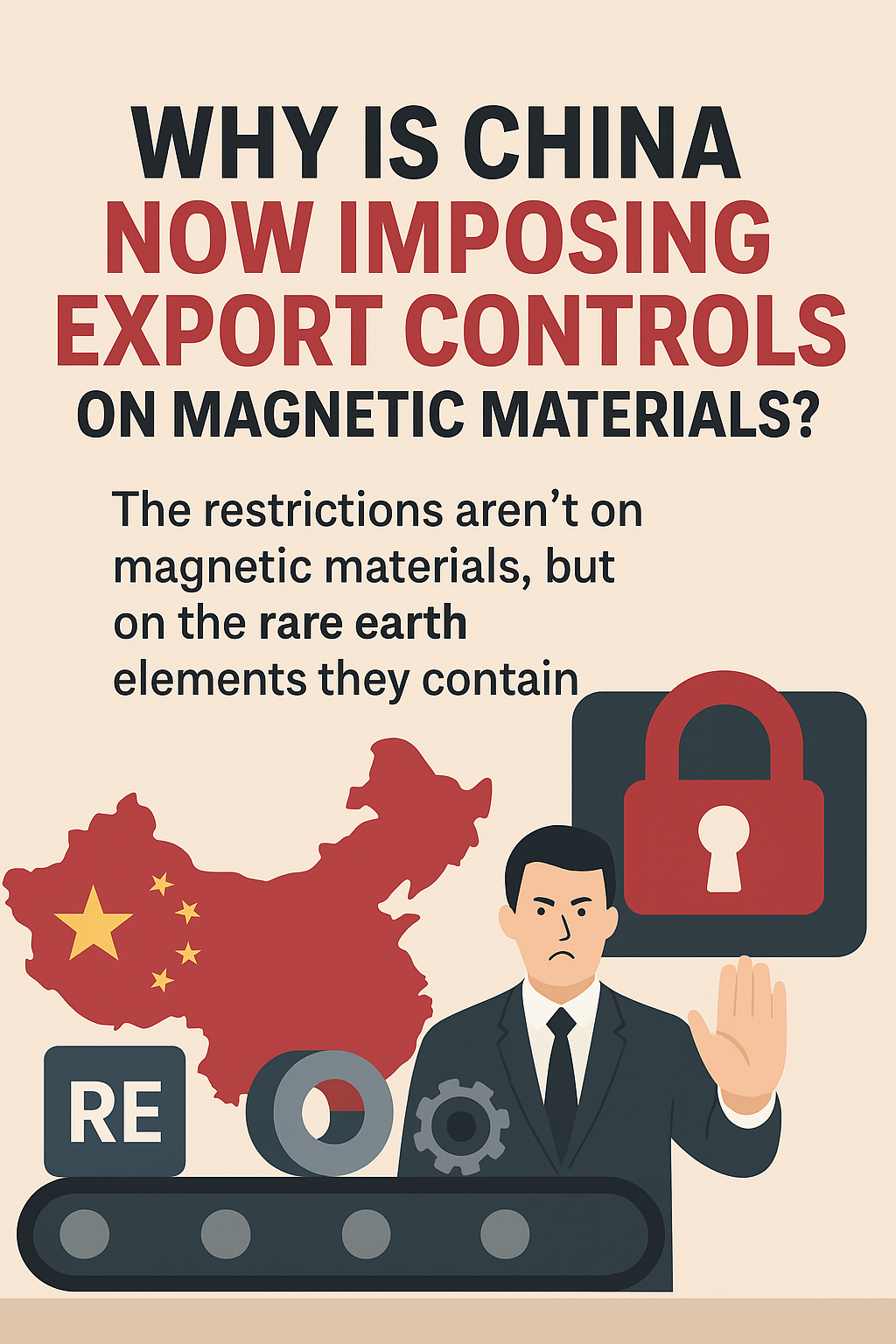In October 2025, China’s Ministry of Commerce announced new measures tightening rare earth export controls, extending restrictions to include metals, equipment, raw materials, auxiliary materials, and related technologies.
This move has drawn global attention because rare earths — though not truly “rare” — are indispensable to modern technology, from smartphones and electric vehicles to aerospace and AI robotics.
As the world’s largest rare earth producer, China holds dominant advantages across the entire supply chain. These controls are reshaping the international conversation around technological independence, strategic resources, and industrial security.

What Are Rare Earths?
1. Definition and Nature
Rare earths refer to a group of 17 metallic elements — 15 lanthanides plus scandium and yttrium — that share similar chemical properties.
Although the word “rare” appears in the name, these elements are relatively abundant in Earth’s crust (about 0.0153%), exceeding metals such as copper and lead.
Their “rarity” lies in complex extraction and uneven distribution rather than scarcity.
These elements are essential non-renewable strategic mineral resources, used in energy, defense, and electronics.
2. Classification of Rare Earths
Light Rare Earths (LREEs): lanthanum, cerium, praseodymium, neodymium, etc.
→ Common in permanent magnets and catalysts; relatively abundant.Medium Rare Earths (MREEs): gadolinium, terbium, dysprosium.
→ Used in high-performance magnets and fluorescent materials.Heavy Rare Earths (HREEs): holmium, erbium, thulium, ytterbium, lutetium, scandium, yttrium.
→ Extremely scarce and critical for defense and aerospace technologies.
The October 2025 controls particularly target medium and heavy rare earths such as holmium, erbium, thulium, and europium, due to their strategic importance.
By Application
Functional Rare Earths: Enhance performance — e.g., magnets, catalysts, and display phosphors.
Structural Rare Earths: Serve as base materials in alloys and coatings, crucial for high-temperature and corrosion resistance.
By Source
Primary Rare Earths: Extracted directly from ore (e.g., Bayan Obo in Inner Mongolia).
Recycled Rare Earths: Recovered from waste products like NdFeB magnets and fluorescent lamps — an increasingly important sustainability strategy in China.
3. Properties of Rare Earths
Magnetic Properties
Elements such as neodymium, samarium, terbium, and dysprosium form powerful permanent magnets.
Neodymium-iron-boron (NdFeB) magnets, for example, are over 10 times stronger than traditional magnets and crucial for:
Electric vehicle motors
Wind turbine rotors
Smartphone vibration units
Without them, devices would be larger, less efficient, or non-functional.
Optical and Electromagnetic Properties
Europium and terbium emit specific fluorescence, used in LED screens and displays.
Gadolinium serves in MRI imaging due to its magnetic sensitivity.
High-Temperature Stability
Adding lanthanum or cerium to alloys improves heat and corrosion resistance, enabling applications in jet engines and rocket nozzles.
Rare earths also act as catalysts in auto exhaust systems — cerium converts toxic gases into harmless compounds.
Applications of Rare Earths
1. New Energy Industries
Electric Vehicles (EVs)
Drive motors rely on NdFeB magnets for compact size and high torque.
Without them, motor power density drops by 30% and range decreases.
A typical EV contains 5–10 kg of rare earths; luxury models use 15 kg or more.
Wind Power
A 5 MW offshore turbine uses up to 5 tons of rare earth magnets.
With global wind capacity growing by 10% annually, demand for rare earths continues to surge.
Energy Storage
Adding rare earths to vanadium flow batteries improves conductivity, while in solid-state batteries, rare earth oxides enhance stability.
2. High-End Manufacturing
Humanoid Robots
Each robot requires ~3.5 kg of NdFeB magnets to power precision motors.
As AI robotics advance, this sector’s rare earth demand will soar.
Low-Altitude Aircraft & Drones
Rare earth-enhanced alloys increase strength-to-weight ratios, while magnetic sensors improve flight control.
Semiconductors
Rare earth additives in photoresists improve lithography accuracy.
Rare earth oxides in chip packaging boost heat dissipation.
They’re also used in smartphone displays, hard drives, and headphones for better color, data speed, and sound quality.
3. Defense and Aerospace
Rare earths play an irreplaceable role in national defense and military systems:
Fighter jet engines: High-temp alloys with yttrium and lanthanum maintain strength above 1,000°C.
Missile guidance: Magnetic sensors enhance accuracy.
Ship propulsion: Rare earth motors offer low noise and high power density.
Armored vehicles: Rare earths strengthen armor while reducing weight.
Radar & weapons: Magnets increase detection range and precision.
Impact of China’s Export Controls on Global Markets
1. Supply Shortages
China provides over 80% of global rare earth exports, and nearly 90% of medium and heavy rare earths.
Tighter export controls will likely cause shortages abroad, particularly for advanced manufacturing.
Alternative suppliers — such as the U.S., Australia, and Canada — face challenges:
High mining costs
Environmental restrictions
Limited refining capacity
Thus, global dependency on China is expected to persist for at least 5–10 years.
2. Rising Production Costs
Rare earth scarcity will raise raw material prices, driving up the cost of downstream products — especially EV motors and wind turbines.
Foreign manufacturers may:
Increase retail prices
Seek rare earth substitutes (though performance is lower and R&D costly)
3. Capacity Expansion Abroad
Nations are now accelerating domestic mining and recycling projects:
The U.S. is subsidizing local rare earth mines.
Australia’s Lynas and Canada’s Vital Metals are expanding output.
However, due to technology gaps and infrastructure limits, large-scale supply diversification remains years away.
China’s Strategic Position
China’s rare earth policy aims to:
Protect strategic resources
Encourage domestic innovation
Ensure sustainable mining and recycling
Maintain control over global supply chains
By integrating mining, smelting, magnet production, and high-tech applications, China continues to lead in both volume and value of the rare earth industry.
For insights on magnetic materials and sustainable production, visit Cort Magnet
Conclusion: The Global Significance of China’s Rare Earth Controls
The China rare earth export controls of 2025 are not merely a trade policy — they represent a strategic recalibration of global industrial power.
From clean energy to defense, the world’s reliance on Chinese rare earths underscores the importance of supply chain resilience and technological self-sufficiency.
As nations race to secure their own resources, China’s leadership in rare earth extraction, refining, and magnet technology ensures it remains at the heart of the world’s high-tech future.


